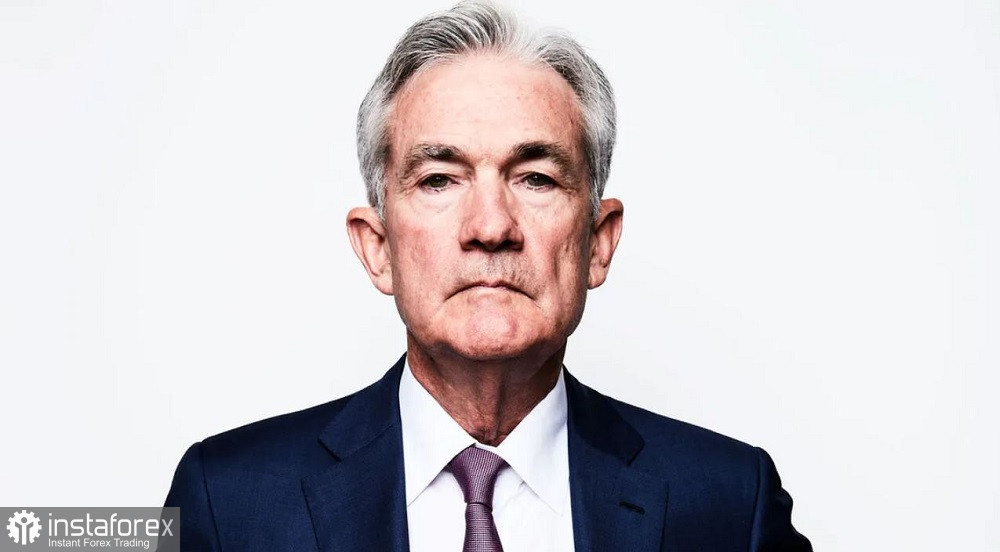The euro-dollar pair yesterday updated a seven-month price high, reaching 1.0762. But at the same time, EUR/USD buyers failed to consolidate above the 1.0750 resistance level, which corresponds to the upper line of the Bollinger Bands indicator on the daily chart. Denoting a daily high, traders retreated towards the close of trading on Monday, ending the day at 1.0730. However, the bullish mood for the pair still has not dried up: today, buyers continue to besiege the above price barrier with a clear intention to approach the boundaries of the 8th figure.

The most important macroeconomic release this week for EUR/USD will be the December CPI (Thursday, January 12). However, dollar pairs might already feel price turbulence on Tuesday following Powell's speech.
The head of the Fed will take part in a discussion at an international symposium organized by the Swedish central bank. The symposium itself is devoted to the topic of the independence of the Central Bank as an institution, and if Powell explains his position solely within the framework of the stated topic, the foreign exchange market will ignore his speech. However, the head of the Fed quite often "goes beyond" answering questions from journalists or participants in the event. Whereas, under the current conditions, any hints of a dove or hawk nature can significantly affect the dynamics of dollar pairs. And first of all—on the dynamics of EUR/USD.
Recall that one of the most influential members of the Fed, New York Fed President John Williams, announced at the end of last year that the regulator would raise the base rate "as high as necessary to bring inflation under control," making it clear that the central bank may revise the final rate upwards. According to Williams, inflation in the U.S. has begun to weaken but needs "a much more significant slowdown in order for the Fed to soften its position on the need for policy tightening."
After these comments, the dollar temporarily strengthened its positions, as traders doubted that the regulator would gradually wind down the hawkish rate in 2023. An additional argument in favor of these doubts was the minutes of the December Fed meeting. According to the document, none of the 19 members of the top management of the Federal Reserve considers it reasonable to reduce the base interest rate this year.
However, today traders are concerned about more pressing issues: does the Fed intend to slow down the pace of the rate hike to 25 points and can the central bank revise downward the final point of the current cycle of tightening monetary policy? The latest macroeconomic releases are pushing market participants toward positive answers to these questions.
The scales in favor of the conditionally "dovish" scenario tilted after the release of Nonfarm payrolls report. In a sense, this is a turning point: before the publication of key data in the U.S. labor market, the probability of a 25-point rate hike in February was 55% (according to the CME FedWatch Tool). To date, the probability of implementing a 25-point scenario is already estimated at 77.2%. Powell's soft comments and the "red color" of the inflation data will only strengthen the market's confidence that the Fed will slow down the pace of tightening monetary policy to 25 points next month.
In fact, Nonfarm payrolls have launched the "dovish scenario" flywheel. Unemployment in the U.S. has fallen to 3.5%, job growth rates are slowing down smoothly (the indicators came out in the green zone but reflected a decline), while wage growth rates are steadily declining. That is, the labor market remains strong, while the pro-inflationary factor (wage component) gradually but consistently dissipates.
The structure of reports on the growth of ISM manufacturing PMI and services PMI show similar trends: for example, none of the six major manufacturing industries reported price increases.
All this suggests that the Fed "can afford," firstly, to move to more moderate steps in the context of raising interest rates, and secondly, to revise the peak value of rates downwards (at the moment, the Fed has declared exchange rate to the level of 5.1%).
Given this disposition, any hints of a dovish nature voiced by Jerome Powell will be interpreted against the U.S. currency. In this case, EUR/USD buyers can gain a foothold above the upper line of the Bollinger Bands indicator on the D1 timeframe (1.0750), opening their way not only to the borders of the 8th figure, but also to the 1.0850 mark. The main resistance level (the target of the upward movement in the medium term) is the 1.0950 mark: at this price point, the upper line of the Bollinger Bands coincides with the upper boundary of the Kumo cloud on the daily chart. It is advisable to make trading decisions based on the results of Powell's speech today (in the case of longs – only after fixing above the 1.0750 mark).
 English
English 
 Русский
Русский Bahasa Indonesia
Bahasa Indonesia Bahasa Malay
Bahasa Malay ไทย
ไทย Español
Español Deutsch
Deutsch Български
Български Français
Français Tiếng Việt
Tiếng Việt 中文
中文 বাংলা
বাংলা हिन्दी
हिन्दी Čeština
Čeština Українська
Українська Română
Română

